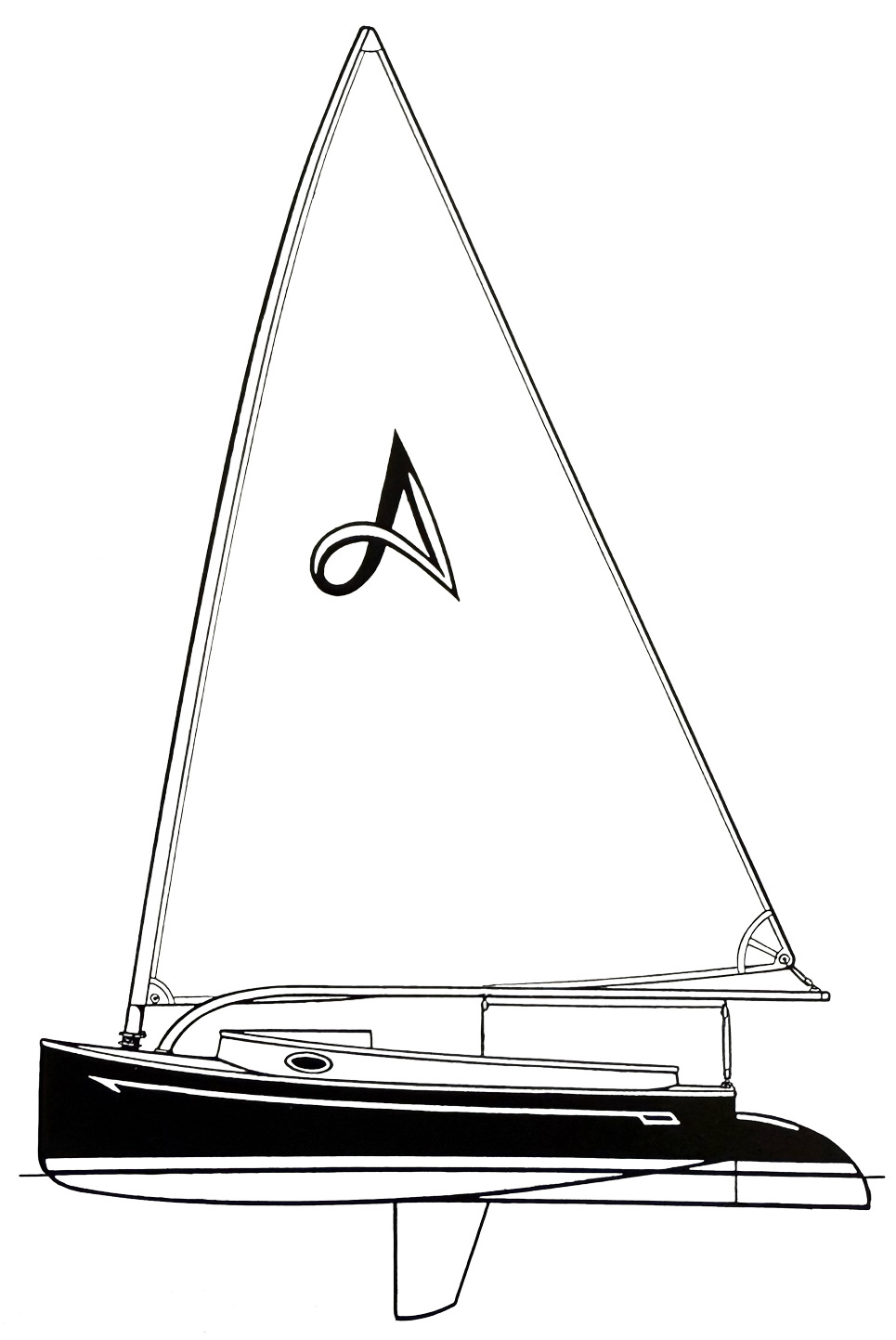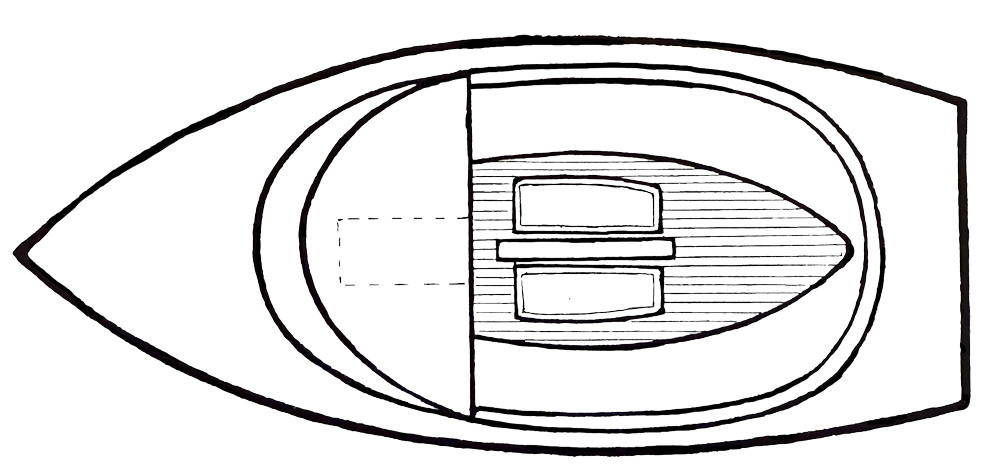Alerion Express Cat
Traditional catboat daysailer with modern twists
Garry Hoyt and the Alerion team bring us this updated version of the traditional Cape Cod catboat. Catboats are older than Bill Wyman and may be an acquired taste. Certainly the styling, with its snubbed-off ends and superbroad transom, gives the catboat its distinct look. However, we are seeing more boats today with minimal overhangs and broad sterns, so the catboat does not look as foreign as it did to me in the early '60s.
Garry Hoyt can't leave anything alone. The catboat came with a number of genetic weaknesses or "personal idiosyncracies" and Garry attacked these with his typical innovative attitude. Catboats have too much weather helm. Catboats don't go to weather. The solution to this was to renovate the rig using a free-standing, carbon-fiber mast and the independent, deck-mounted, patented, Hoyt free-standing self-vanging boom, known as the PHFSSVB.

This hull looks remarkably like that of any other catboat. Even some of the old cats had hollowed entries. The Hoyt catboat pushes this hollow farther and reduces volume forward. I suppose the turn of the bilge aft might be tighter than the older models, but I don't have hull lines so that's just a guess. Traditional catboats had big, triangular, flat-plate centerboards. These workedÑsomewhat. Garry's board is a higher-aspect-ratio board that is shown with two different shapes depending upon the drawing. Note how far aft the board is. This will help with weather helm.
The Express Cat's rudder is quite unusual. Catboats traditionally had big, barn-door rudders, long in chord and short in span. Moving the center of pressure of the rudder exacerbated the cat's proclivity for weather helm. Heel an old catboat over and this rudder blade acted like a speed-brake drag device. Excessive chord length was intended to make up for lack of span, as shoal draft was a requisite of these boats. The basic catboat rudder has become a classic-looking shape and Garry retained that while using an innovative pivoting blade that drops out of the big rudder cheeks. This gives the cat a modern, high-aspect-ratio rudder blade. The rudder blade swings up when you bump the bottom.
An important part of sailing for me is independence. I see this catboat as a way for the less-than-athletic sailor to get away by himself and to sail safe and dry in any weather. I hate outboards, so I'd give it a try without auxiliary power for a while. I'd just fit a tiller-operated autopilot, pack a generous lunch, take a few issues of The Audiophile Voice and enjoy a day of relaxing sailing and reading. If this sounds good, don't overlook Garry Hoyt's new catboat. Sailboats don't have to be complicated to be fun.
LOA 19'2"; LWL 17'6"; Beam 8'6"; Draft board-up 14", board down 4'; Displ. 1,450 lb.; Sail area 272 sq. ft.; SA/D 34; D/L 120; L/B 2.25


Comments